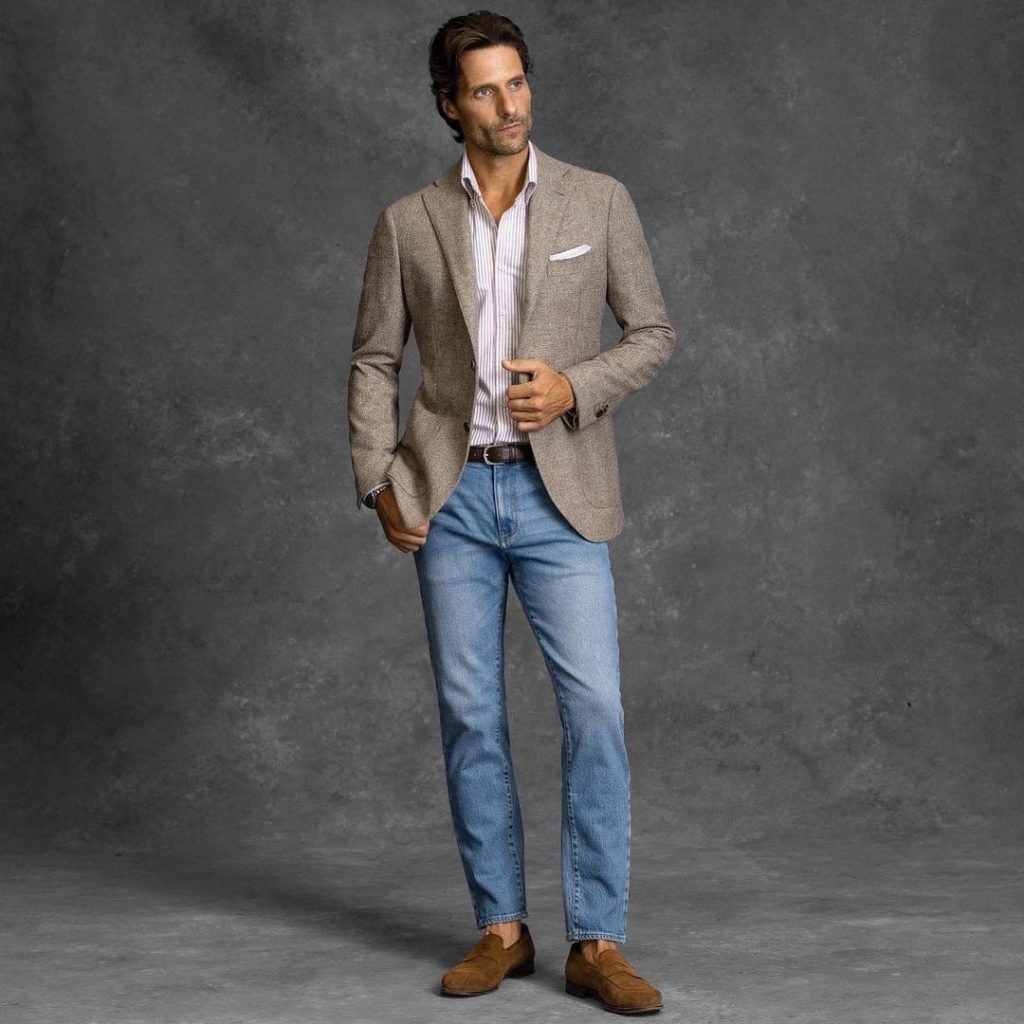
Put This On wouldn’t be possible without the support of our sponsors. So, twice a month, we like to give them a special shoutout. Doing so allows us to show our appreciation and update readers on our sponsors’ special happenings.
Proper Cloth launched a new pre-fall collection that includes hardwearing oxford shirts, versatile plaid button-ups, refined merino knitwear, light layering pieces, and a new range of tailored sport coats made from wool-silk-linen blends and chunky hopsack wools. The sport coats have a soft shoulder line, giving the tailoring a more casual feel, and the button-up shirts can be customized with any stylistic detail, including Proper Cloth’s popular Soft Ivy collar that recalls the best of 1960s-era Ivy style.
The more exciting news, however, is off the site. Mitchell at Menswear Musings recently reported that Proper Cloth has reintroduced its older Soft Roma Cutaway collar. I know, I know—the term cutaway conjures up images of 2010 hashtag menswear collars that resembled a balance beam when fastened. The Soft Roma Cutaway, on the other hand, was essentially Proper Cloth’s version of Eidos’ popular Marcus collar. It has longer collar points, a taller collar band, and an unusual cut that makes it look quite rakish when worn open (these cutaways are naturally more casual than their semi-spread counterparts, so wear them open and without a tie). Mitchell wears the Soft Roma Cutaway in washed denim and chambray fabrics. The style also works well in fabrics from Proper Cloth’s polo collection, which this season includes a desaturated, dusty pink that would look great under navy jackets.
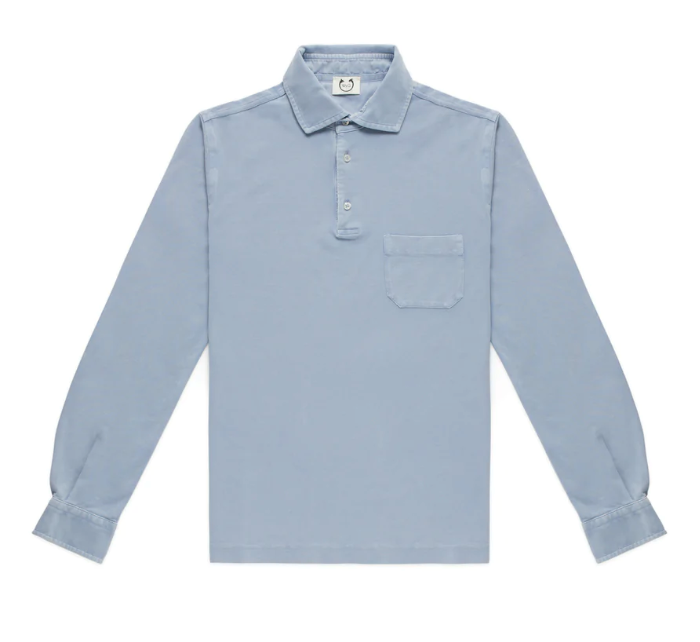
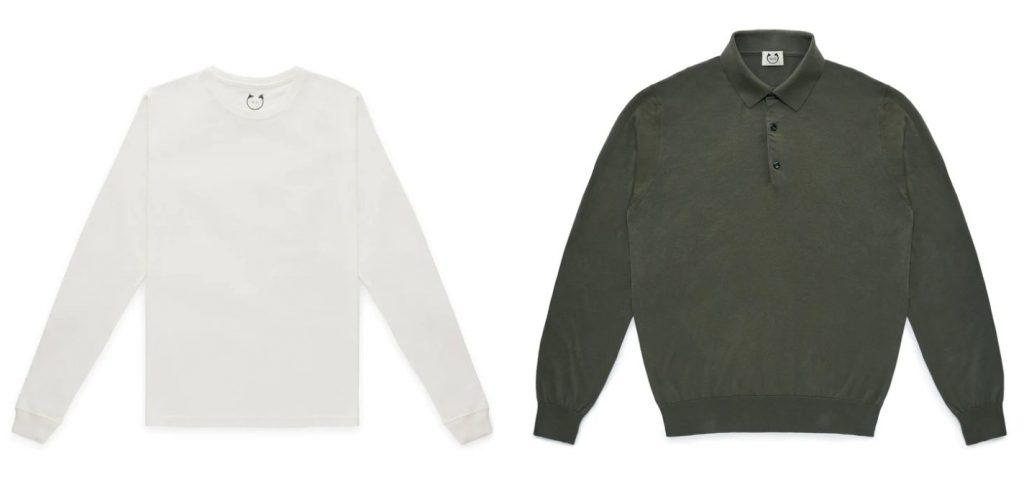
Wolf vs. Goat has always gone the extra mile when sourcing fabrics. Their polos are made from Italian linen-silk yarns rather than the more common merino; some t-shirts are colored with environmentally-friendly seaweed dyes. This past week, they introduced a new line of henleys and short-sleeved tees made from Fulvia, the heavyweight champion of Supima cotton.
As many readers know, the process of making fabric starts with growing fibers (here being cotton), which are sorted, combed, and then spun into yarn. Longer fibers, called “long staple” in the industry, are more resilient to tearing and pilling. Supima is one of the world’s better brands of long-staple cotton (and it’s grown right here in the USA). It’s known for its strength, softness, and color retention, which is why it’s so prized. The Italian mill Mida takes American-grown cotton and then spins and knits these jerseys in Italy. These fabrics are stout and beefy, clocking in at a hefty 9.5oz. After they’re cut and sewn into garments, the manufacturer dyes these pieces whole to achieve a naturally lived-in look. Prices are just north of $100, but remember that if you pay a one-time fee of $25, you can get 50% off all full-retail prices for the rest of your life. Pair these this autumn with chinos, jeans, or fatigues.
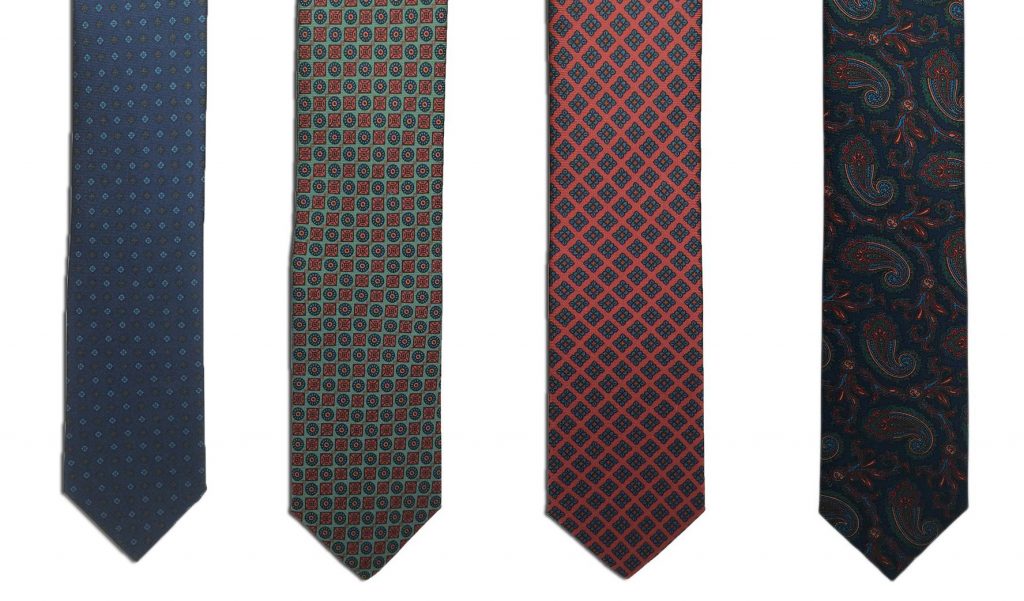
If you’re looking to spruce up a fall wardrobe, Chipp’s ancient madder ties can be worn with flannel suits, corduroy sport coats, and of course, tweed (nothing badder than tweed with madder). Paul Winston over at Chipp once told me the chalky, dusty hand of ancient madder reminds him of a horse’s wet nose. I’ve always thought it was a charming description.
The term madder refers to two things. The first is the rich-red, vegetable dye that’s derived from the Eurasian plant Rubia tinctoria. It was used to dye regal clothes in ancient times, which Bruce Boyer says is how we get the “ancient” part of ancient madder. Then we have “madder style,” which is an old printing method that involves using thickened mordants, drying, aging, dunging, and dyeing with alizarine (the coloring agent obtained from madder root). I’ve never known whether madder in silks refers to the first or the second, but for what it’s worth, not all madder ties contain red.
In any case, the nice thing about madder ties is that they sit in the middle in terms of formality – just as good with tweed and corduroy jackets as they are with worsted suits and pinstripes. Chipp’s are made in New York City from the same English silks used by top-tier neckwear producers, but theirs are just $75 (almost a third of what some of their competitors charge). Paisley is perhaps the most classic option, while the small geometric foulards are better with suits and than sport coats. Take the diamond motif if you want something a little updated.
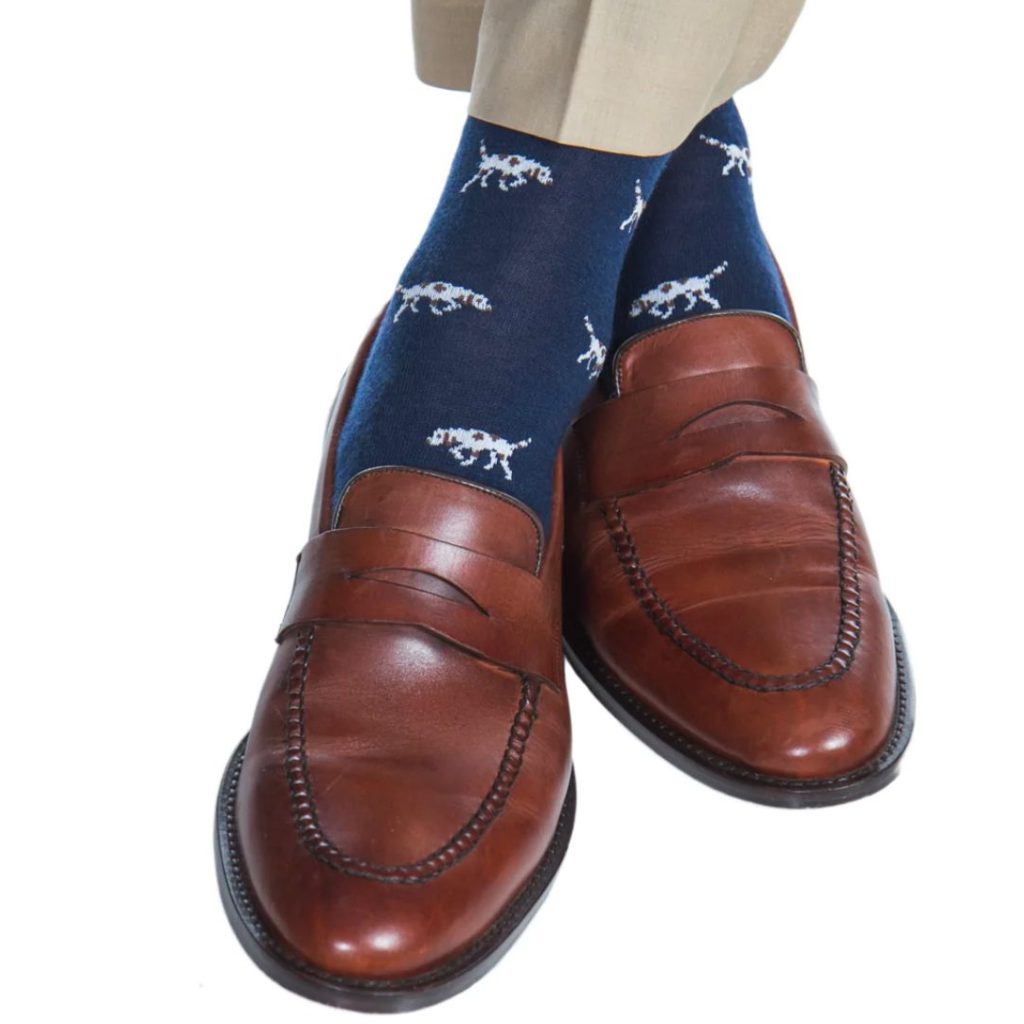
The Labor Day sale at Dapper Classics begins this Friday and runs through Monday (September 5th). During that time, you can save 10% on orders over $50 with the code RR10, 20% on orders over $100 with the code RR20, and 25% on orders over $150 with the code RR25. The promotion applies to everything on their website, including their cotton socks (which we love) and their wide selection of classically cut trousers (which we think are one of the best values in their category, even at full price).
Also, starting tomorrow, Dapper Classics will let you choose any pair of free socks for their Sock of the Month promotion. In the past, they’ve always offered a free pair of socks if you purchase three or more pairs at full price, but the free pair was always pre-selected. For September only, you can choose your own pair. This can be a great time to stock up on staples such as navy over-the-calf navy socks in merino wool or cotton, or conservative office-ready motifs such as pin dot and grenadine.
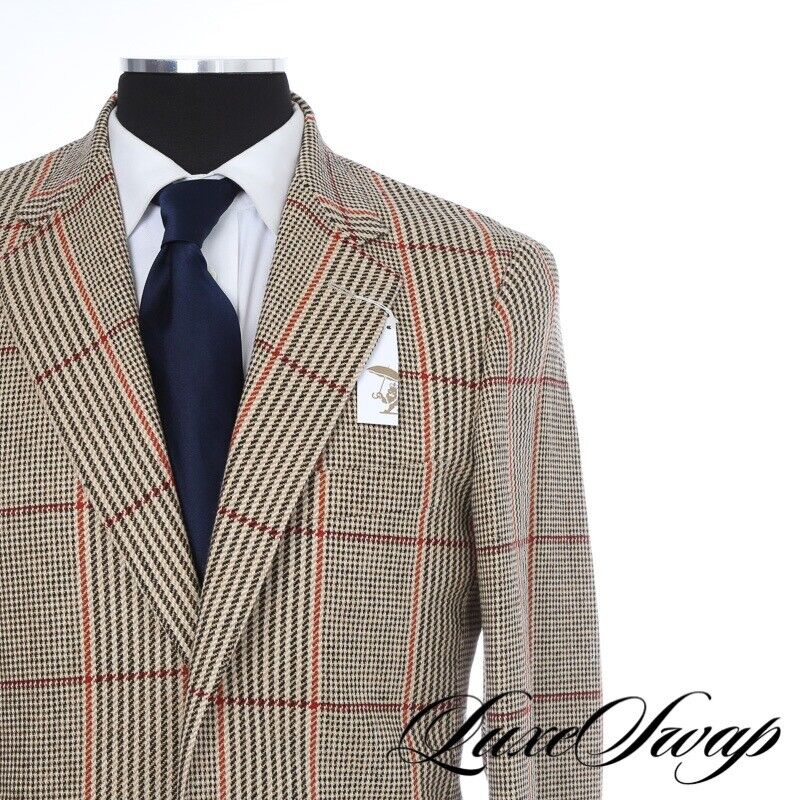
BRIO in Beijing is easily one of the best menswear shops in the world. It was founded some years ago by George Wang, a longtime customer of some of the finest bespoke tailors in the world. If you’re trace the history of classic men’s tailoring over the last ten or fifteen years, you might be surprised to learn how many things lead back to George. He was the one who told The Armoury about Ring Jacket and Antonio Liverano, after having discovered both of them while on a trip to Japan. He’s also the first to discover talented artisans such as Saic, who later got a write-up on Permanent Style.
BRIO distinguishes itself from other stores due to George’s keen eye for fabrics, construction, and style. Unfortunately, because the shop does not have a webstore, it can be difficult for people who are not based in Beijing to purchase items from it. However, LuxeSwap was able to obtain some unsold inventory from BRIO’s old location (they’ve since rebranded as Atelier BRIO Pechino to focus more on custom tailoring). Southwick Russel plaid and houndstooth tweeds, Rota tastefully patterned pants, and a wide range of Italian dress shirts are all included. Keep an eye out for BRIO stock on LuxeSwap over the next few weeks. You can find them by searching for the term BRIO.







